Giriş
Replacing the upper case requires the removal of nearly every component in your MacBook Pro. You will also need to transfer your old trackpad over to your new upper case.
Neye ihtiyacın var
-
-
Remove the following 10 screws securing the lower case to the MacBook Pro 13" Unibody:
-
Seven 3 mm Phillips screws.
-
Three 13.5 mm Phillips screws.
-
-
-
Slightly lift the lower case and push it toward the rear of the computer to free the mounting tabs.
In the introduction you should link fixers to this excellent doc: https://www.ifixit.com/Misc/HD_Software_...
It is really critical, super easy, and free(!) to clone your existing drive onto the new one you will install. I ran into one error, but SuperDuper! support replied immediately on how to fix it...Thanks ifixit and SuperDuper! (I ponied up the $28 for the software anyway, I was so impressed!)
Long story short: I drank the AppleKoolAid back in 1984 and have always left the guts of my machines up to Apple - until recently when I needed to swap the SATAs from my original MacDaddy (2009 13" MBPro that I killed in 2018 - coffee + blackout = OOOOPS) into a pristine 2009 MBPro from a Goodwill in North Carolina through eBay. I need the files from iCal and MacMail that can't be opened in my newer machines.
Well . . . I ain't never done nuttin' like that, before!
Enter Luke Miani on YouTube. He raves about you guys! So, I watched everything I could, read your site, bought the right tools and at the ripe old age of 72, I sat down, this morning and did the work. Now my original MacDaddy lives in MacDaddy2.0.
Am I allowed to cry?
Seriously, I can't thank you enough for your bitchen site and killer tools. I wish I'd'a been turned on to this shizzle 30+ years ago.
IFIXIT - IDIGIT!
HAHAHAHAHAHAHAHAHAHA.
That was a brilliant read.
Yes, I came across ifixit a few years ago. Totally helped me out on several occasions.
Glad your Mac repair journey worked out.
:)
Cary B -
-
-
-
Use the flat end of a spudger to lift the battery connector up out of its socket on the logic board.
How do you get that battery connector back on? Do you just press it in back in place after you're done?
yes. I usually plug it in before I screw it down so I can lift the battery a bit and have enough slack to be able to go straight down on the connector, otherwise it comes in on a bit of an angle, which can't be good (though not necessarily bad).
This step almost finished me, and I did extensive damage to the battery plug. Fortunately, I later replaced the battery, and the replacement came with a new plug! :) Newbies need to know - 1. The battery plug is like a thin lip on a thicker lip, so you need to pry BETWEEN 2 thin lips to get it off, else you are trying to yank out the socket. 2. Mine was initially VERY tight, and trying to get it out broke the plastic on all sides of plug, even though I was as careful as possible. Luckily, this didn't hurt functionality and I later replaced the battery. AFTER disconnecting once, it was never so tight again,
-
-
-
Use a spudger to pry the fan connector out of its seat, and straight up off the logic board.
I just soldered it back on. . . I tried to clean the pads with braid first, but it didn't do much so I don't think that's necessary. I first supper-glued it in place with the pins on the pads and then I put a tiny dab of solder on each pin/pad. Plugged in the fan and i works!
Just the answer I was looking for Ron! Awesome work buddy!
i recommend not to use the spudger. you damage more than by unpluggin the plug by hand. just simply pull the cable close to the plug of the old fan softly upwards out. the plug than comes easily out. put the new fan in and push the new plug by hand in. it is much easier than using a spudger. i also started with a spudger but nearly broke the plug out, so i watched a youtube tutorial and learned about it…
-
-
-
Grab the plastic pull tab secured to the display data cable lock, and rotate it toward the DC-in side of the computer.
-
Pull the display data cable connector straight away from its socket, towards the DC-in side of the computer.
-
-
-
Remove the following two screws securing the display data cable bracket to the upper case:
-
One 7 mm Phillips.
-
One 5 mm Phillips.
-
Lift the display data cable bracket out of the upper case.
If you only want to replace the DC-in board, stop here and GOTO 17 (and DO NOT 4 and 6).
When the Logic board is loose, lift it up on the Harddrive end and shift slightly towards the HD, so that the USB connectors at the outside come free from under the case rim and the board can be lifted up a bit. Then there´s enough room to move the DC in board, pull the cable out with a pair of tweezers, wriggle it out from under the microphone cable and wriggle the new connector in. It can be pushed into the socket with tweezers or a small screwdriver. This worked perfect for me.
Be careful not to bend the logic board, but otherwise I think there´s much less risk of messing anything up with all the connectors and bits and pieces that need to be loosened and fastened.
-
-
-
Pull the camera cable connector toward the optical drive to disconnect it from the logic board.
There is a small piece just below this connector which is just an adhesive block to keep the connector from coming out. It is easiest to peel it up first with a fingernail or spudger then remove the cable. Likewise reinsert the cable before reapplying the adhesive safety stop.
I couldn't reconnect this cable correctly, so my camera is not working anymore.
It doesn't matter to me, I didn't used the camera that often...
But the Ambient Light Sensor uses the camera to control keyboard lighting, so I wasn't able to see my keyboard in the dark anymore... :(
If you have the same problem, after a couple of google hits I've found this app: https://www.macupdate.com/app/mac/22151/...
Problem solved! YAY!
PS: be careful because WIFI passes through this cable as well!!!!
Look at the photo intently. The connector is inserting not in parallel, but at a slight angle. The bottom corner of the connector is slightly ahead. It is important! Singular metod to insert it.
Vladimir -
-
-
-
Use your fingernail or the tip of a spudger to flip up the cable retaining flap on the ZIF socket for the keyboard ribbon cable.
-
Use your spudger to slide the keyboard ribbon cable out of its socket.
When reinserting the keyboard ribbon cable, make sure you push it in all the way (two plastic tools are helpful - one to push it down flat, the other to coax it all the way in). For 3 days after replacing a top case, my MacBook Pro 13" wouldn't start up. I thought the main logic board was fried too. However, reinserting the keyboard ribbon cable again, this time perhaps 1mm farther in, and it started up again! I did the same for the "keyboard backlight ribbon cable" (i.e. reinserted it just to make sure). Really not sure which completed the circuit so is would start, but I suspect the keyboard ribbon cable.
amiller770 kullanıcısından alıntı:
When reinserting the keyboard ribbon cable, make sure you push it in all the way (two plastic tools are helpful - one to push it down flat, the other to coax it all the way in).
I usually use a piece of sticky transparent office tape and stick it over the flat cable a bit further away from the mating part then pull on it. There is no better way to force the flat cable into a stiff connector without damaging the fragile cable.
As others have stated, if the keyboard ribbon cable isn't fully inserted the MBP will not power on. Leo Bodnar's recommendation to use a piece of transparent office tape did the trick for me. Many thanks Leo!
Inserting the ribbon cable for the keyboard was really difficult, but i was able to get it in using a piece of tape and pulling it up, just like the tape on the keyboard backlight.
Using a piece of tape is sheer genius Kelly. My mom once said her definition of genius was an idea that, when you hear it, you say to yourself, “now why didn’t I think of that?” But you never would have thought of it. Brava (or bravo) Kelly!
-
-
-
-
Lift the logic board from its left edge and raise it until the ports clear the side of the upper case.
-
Pull the logic board away from the side of the upper case and remove it, minding the DC-in board that may get caught.
When putting the logic board back in place, it's easier to angle the mic down in it's place as you are placing the board in, rather than after the board is seated.
-
-
-
Remove two Phillips screws securing the hard drive bracket to the upper case.
-
Lift the the retaining bracket out from the upper case.
-
-
-
Remove the following four screws securing the hard drive and IR sensor cable to the upper case:
-
Two 1.5 mm Phillips screws.
-
Two 4 mm Phillips screws.
-
Slide the hard drive and IR sensor bracket away from the edge of the upper case.
-
Carefully peel the hard drive and IR sensor cable from the upper case.
-
-
-
Remove the two outer 6 mm Torx screws securing each side of the display bracket to the upper case (4 screws total).
-
-
-
Grab the upper case with your right hand and rotate it slightly toward the top of the display so the upper display bracket clears the edge of the upper case.
-
Rotate the display slightly away from the upper case.
-
Lift the display up and away from the upper case, minding any brackets or cables that may get caught.
-
-
-
Carefully dislodge the edge of the trackpad closest to the keyboard from its recess in the upper case by pushing it away from the brackets attached to the upper case.
-
De-route the trackpad cable through its slot cut into the upper case.
I concur with Anonymous 596. There is a support wall that runs front to back, under keyboard, held down by 2 Phillips screws that will need to be removed & transferred to new upper case. You can see it being touched by index finger in this pic.
-
-
-
Pull the trackpad away from the outer edge of the upper case.
-
Remove the trackpad and set it aside.
There's a missing step here. In addition to the trackpad, there's an aluminum structural piece that sits under the center of the keyboard, that has to be migrated from old to new case. It's clearly shown to the left of the repair-person's right hand in step 44.
-
-
-
Use a T6 Torx screwdriver to loosely install the 1.1 mm set screw included with your new upper case into its tapped hole near the middle of the trackpad opening on your new upper case.
I bought a used replacement case and had to move a few parts from the old case to the replacement. This included the battery indicator cable, the clips for the trackpad and the bracket in the center of the top case. So worth it at this point to compare your old and replacement case to be sure everything you need is there.
my new case came with the set screw already installed, and i couldn’t loosen it. i didn’t want to strip it and cause a bigger problem, so i left it alone. the trackpad seems to work fine so far regardless, although i may take the bottom case off and play with it a little if i get a chance.
i also (just like Ron) had to move the trackpad clips, battery indicator and center bracket to the new case. they were not included.
-
-
-
Carefully insert the cable from your old trackpad through its slot cut into your new upper case.
-
Use one hand to hold the trackpad cable in place as you insert the two retaining tabs on the outer edge of the trackpad under the lip on the upper case.
-
Pull the trackpad cable as you seat the trackpad into its void in your new upper case.
-
-
-
Tighten the outer two screws along the inner edge of the trackpad and check the alignment of it on the outer side of the upper case.
-
If its alignment looks good, install the rest of the Phillips screws along the inner edge of the trackpad.
-
Before reassembling your machine, verify that the set screw is still installed in a position so the mouse will click correctly.
You can actually replace the keyboard alone fairly easily! I don't know why everyone says you have to replace the whole top case, because if you've got the guts to go this far, you might as well just peel back the illuminator cover and get to work pulling all those tiny screws in the keyboard... Just be careful when peeling up the black adhesive keyboard cover, because you will need to replace it. I used the edge of the ifixit Sesame tool (very thin flat metal opening tool) to carefully slip under any bits of adhesive, and had the keyboard exposed in no time. Also be careful because the clear plastic sheet is actually the keyboard illuminator. Once under all that, it's a mere 50 or so tiny screws, 2 screws in the power button backing, and you've got the keyboard out. Use a magnetized #000 phillips, it will make life much easier than anything else.
Absolutely right. I just replaced a keyboard the same way without much problem but i just want to add that those tiny screws need extra care as the heads can get damaged very easily. If damaged, they become very difficult to remove.
Masood -
I did just that on my mid-2010 MacBook Pro about a month ago and sadly will have to do it to my wife's Early-2011 one next week. I was cleaning all the crap off her keyboard and apparently nuked the K and 0 keys on her keyboard. Probably my ply challenge was aligning the keyboard illuminator. It's still not aligned properly on mine so some keys are better lit than others, but otherwise it was a relatively easy fix and far cheaper than replacing the entire upper case.
I replaced my keyboard less than an hour ago. The biggest pain/most time consuming was reattaching the ZIF connector for the keyboard and backlight. No matter what I did I could not get the %#*@ thing to reattach. What sadist designs these things? I had to walk away from the project for an hour and finally success.
All those screws will make you go crosseyed!
It helps to put some tape along the cable going lengthwise to the cable, and then fold the end of the tape onto itself to give yourself something to hold onto. This will give you some leverage to get that puppy into the socket.
I’m glad you managed !!!
I’m suffering :( take a part about 5 times…… ordered new (used) keyboard, the same results. I tested logic board in my daughter MAC, board works 100% no trouble ……. what could be wrong? there a secret how to reassemble keyboard parts together? I ripped a little bit black plastic thing, not top one with tiny connectors……
In the end I have two keyboards, cleaned and taken a part, both of them acting identical when installed. Some keys respond by giving absolutely not relevant symbols, beeping noise come with almost every key i pressed…..
Recovering after massive cappuccino spell after surprising hug :(((((
I swear to post photo step by step, if I will achieve this one……….. assemble back to 100% working condition after total reassembling, ultrasonic cleaning and drying………. just keyboard panel.
Give me nightmares :) will be first time I have so much trouble to fix………
I'm wondering about putting it back together. Different wires and small parts etc were glued or adhered in some way to the case or sides or whatever, as it is put together in the beginning. Is that just to make it easier to put it back together? Should I try to stick them back the way they were with something? Can you use tape or glue if it's just a wire? I wouldn't want to use something that would melt...or is this not something to worry apout?
I just used 1/4 polymide tape, and iFixit double sided tape. Works like a champ.
-
To reassemble your device, follow these instructions in reverse order.
To reassemble your device, follow these instructions in reverse order.
İptal et: Bu kılavuzu tamamlamadım.
48 farklı kişi bu kılavuzu tamamladı.
2 Yorum
Very good tutorial. Guide was 100% accurate. As mentioned, make sure you have good quality tools, and follow the guide to be certain the right get tool is used for certain screws, I did strip one screw head, in my opinion not bad considering all the tiny screws! But now my MacBook works, and save me having to spend on a new MacBook!
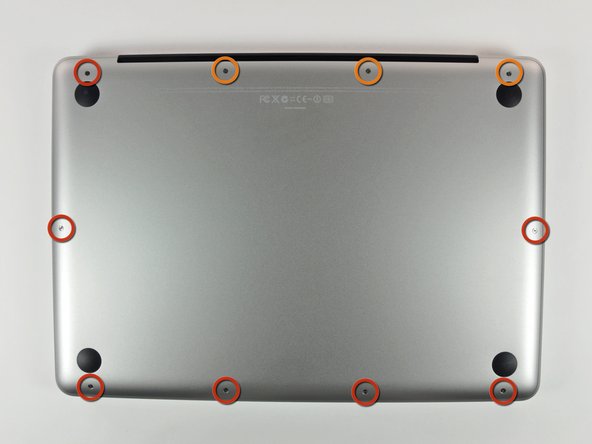






















































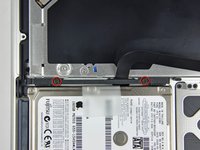
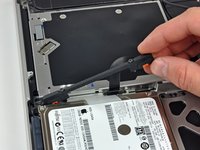




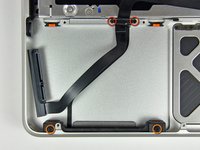
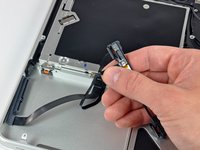


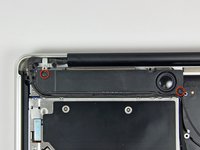
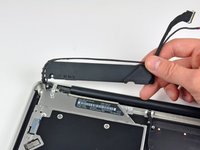


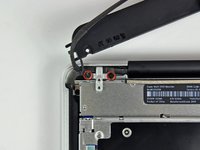



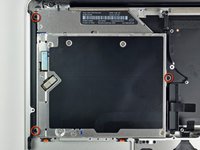
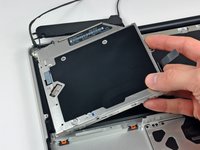





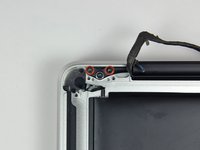
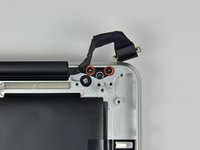





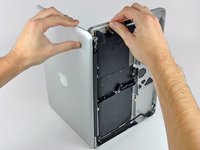
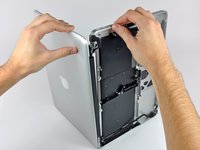
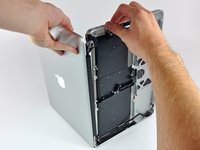






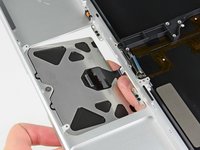
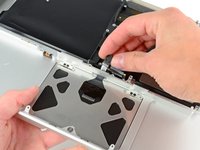





Compare the short screws carefully before reinstalling them. The shouldered screws go in the holes on the front edge.
David Kilbridge - Yanıt
Before I started removing any screws I took a piece of paper and drew the bottom of the laptop and put a piece of double-sided tape in the spot where each screw goes. That way when I took out the screws, I could put them on the tape so I knew exactly which screw went in which spot. I did the same thing for dismantling the inside on another sheet of paper, then a third sheet for the screen after getting the front glass off.
mastover - Yanıt
I use a similar technique: I print out the iFixit manual for the job, and Scotch-tape down the screws/brackets/cables I remove at each step next to the component descriptions. That way, when I'm reassembling, the bits are taped right next to the photo of where they came from.
adlerpe -
That's exactly what I do for all my repairs! It's the best way to keep track of all of the parts ' original location and to make sure that you don't miss any parts during reassembly.
joyitsjennie -
Great idea and one I use often
Thomas Overstreet -
Excellent idea! Thanks for sharing it here.
Laura Sharkey -
I used a 00 that fit but the screws were very tight so I used a tiny paintbrush with some wd40 on it and put it around the edges of the screws. Worked like a charm
valentinedhdh - Yanıt
I use a magnetic mat and place the screws in order on that :)
Cary B - Yanıt
How to tell all screws apart?
Spudgeboy - Yanıt